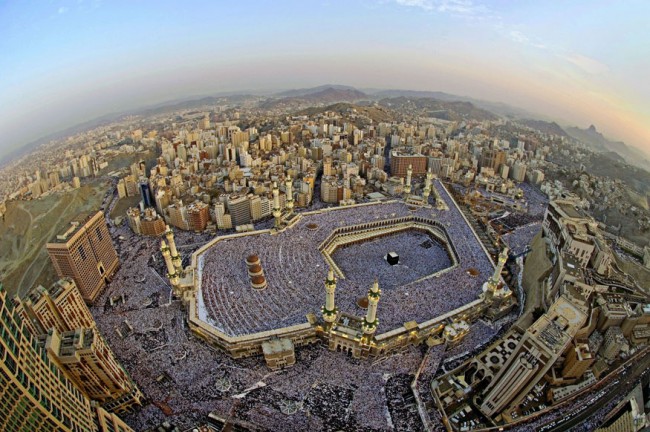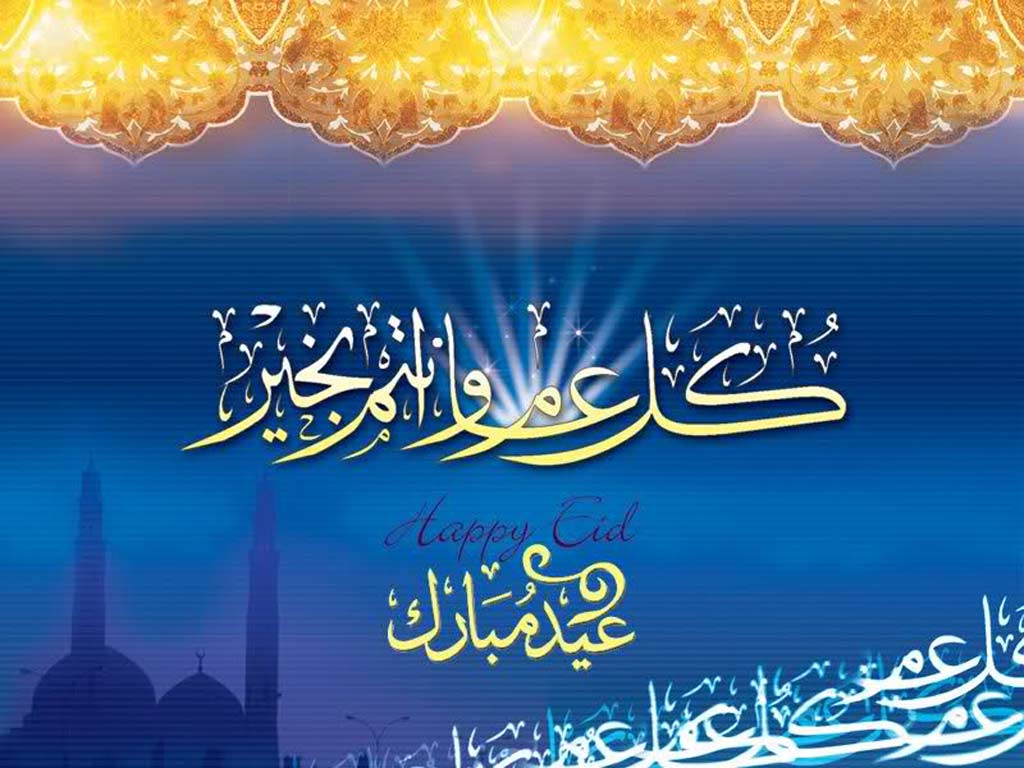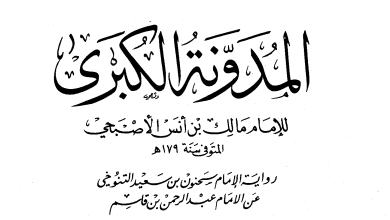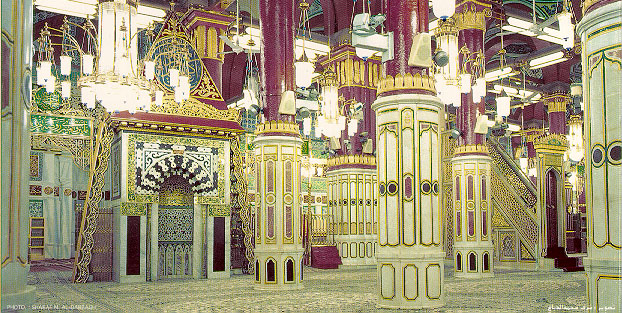Did any Hanafis Tamper with a Narration in Sunan Abi Dawud?
Of the later pseudo-Salafis of this age, one late writer from Pakistan was the late Sultan Mahmud al-Jalalpuri (d. 1995) who claimed that some Hanafi Ulama from the Indian subcontinent made tahreef (distortion) of a narration found in the Sunan of Imam Abu Dawud (d. 275 AH), in order to support the issue of 20 Rak’ats of Taraweeh Salah.
Others who followed this claim from the same sect include the Pakistani anti-ahnaf like Zubair Ali Za’i (d. 2013), Dawud Arshad and their lesser known inconsequential admirers like Abu Khuzaimah al-Ansari (Imran Masoom), Abu Hibban (Kamran Malik) and Abu Alqama (Ali Hassan Khan). From the Arabs we have the late Bakr Abu Zayd who also made the same assertion against the Ahnaf.
An excerpt from the full response:
———————————————-
The following is a succinct response to the claims spread by Abu Khuzaimah Ansaari and Abu Hibbaan of Birmingham, UK,([1]) whereby they spread a spiteful claim made by one of the late leaders of their movement, by the name of Mahmud al-Jalalpuri (d. 1416 AH/1995 CE), which in the words of the former two entailed the following extravagant suggestion:
Alhamdulilllah this is the second and final treatise in the series which exposes one of the shameful distortions of the hanafee deobandee’s which they did in Sunan Abee Dawood, we seek refuge in Allaah from such distortions and false explanations.
The late Mahmud al-Jalalpuri entitled his short piece with the provocative title:
Na’am as-Shahood a’la tahreef al-ghalaain fee Sunan Abee Dawood: Yes, We Do Have Witnesses Regarding the False Distortion of the Extremist’s In Sunan Abee Dawood.
Note, the late Saudi writer by the name of Dr Bakr Abu Zayd also spread this futile claim in his al-Rudud (p. 258)! This latter individual has also been shown to be unreliable in an earlier article that was compiled from this pen in response to Abu Khuzaimah and Abu Hibban regarding a narration in the Musannaf of Ibn Abi Shayba.([2])
I say:
Indeed, we too have witnesses that the real extremists have no proof that some later Hanafi’s allegedly tampered with a narration in Sunan Abi Dawud! This is not just a claim, but a fact that shall be demonstrated from scans from the classically recognised works of two acknowledged authorities in Hadith from more than 650 years ago, and crucially so, these two Huffaz of Hadith that shall be named in due course were from the Shafi’i Madhhab.
Al-Jalalpuri in response to a pamphlet mentioning the issue of the Rak’ats of Taraweeh mentioned:
On the other hand one point has come to my attention from this pamphlet, which is new, it could be dangerous and a new fitnah may arise from it, so I think it is necessary to bring it to the attention of the people so that in the future these impure and unholy distortions6 are stopped from entering the Deen.
The point was that on page 5 of the aforementioned pamphlet a hadeeth from Abu Hurairah ([3]) has been mentioned with the following wording,
From al-Hasan from Umar bin al-Khattaab, that he gathered the people to stand behind Ubayy ibn Ka’ab and he would lead the people in 20 raka’hs” (Abu Dawood)7
This is the text mentioned by the author of the pamphlet. The word (raka’h) in this Hadeeth are wrong, the correct wording is (Laylah) the correct wording of the Hadeeth in Abu Dawood are
“From al-Hasan (Basree) from Umar ibn Khattaab who gathered the people to follow Ubayy ibn Ka’ab in the Prayer, and he Ubayy would lead them for 20 nights and he did not start the Qunoot except when half (of the month ie 15 days) had elapsed. Then when the last Ashara (last to days) would remain he started to pray in his house and so the people began to say Ubayy has left us.”8 These are the true words of the hadeeth, which mentions 20 nights and not 20 raka’hs and it is apparent by bringing the word raka’h instead of laylah it to make this an evidence for 20 raka’hs (of taraaweeh), this is a shameful and disgraceful distortion in an important religious book.
The question that may arise is that if in other manuscripts and copies the word raka’h is present instead of laylah, then how can one call it a distortion, then the answer is as follows. The reality of the copies, which mention the word raka’h will be discussed a little later, but first, lets look at those proofs and witnesses that prove a distortion occurred and there are many affairs to this.
Footnote no. 7 above was quoted by the translators from Zubair Ali Za’i who claimed:
(Trans note) ShaikhZubair Alee Zaa’eesaid, “This is (ie such a narration being in Abu Dawood) is a pure lie.The edition of Sunan Abu Dawood which I have does not have this narration in it a all and the narration which is mentioned in it (ie Sunan Abu Dawood) (2/136) is, “That prayed for 20 NIGHTS.” Imaam Baihaqee has mentioned his very same hadeeth from Abu Dawood and it contains the words 20 NIGHTS. (Sunan al-Kubraa (2/498). Similarly Mishkaat al-Masaabeeh and Tuhfatul-Ashraaf and others also mention this hadeeth of Abu Dawood with the words 20 NIGHTS.
Imaam Zailaa’ee Hanafee also mentioned this hadeeth from Abu Dawood with the words 20 NIGHTS in Nasb ur-Raayah (2/126). There are many other supports and witnesses for this but these should be sufficient for the people who are just and may the curse of Allaah be upon the liars.” End of his words. (Ta’daad Raka’h Qiyaam ar-Ramadhaan (pg.27).
Like Zubair Ali, al-Jalalpuri also mentioned other later works of Hadith which mentioned the said narration from Imam Hasan al-Basri with the wording “20 Nights” rather than “20 Rak’ah”. This is not the issue at the core of this response, but the matter at hand is to show that no Hanafi tampered and manipulated the wording from “20 Nights” to “20 Rak’ah” as claimed by al-Jalalpuri and his cohorts. The latter claimed further:
We have clarified previously that all the manuscripts of Abu Dawood printed in India up until 1318H all had the words 20 nights in the hadeeth and there is no sign of any differences. However when Maulana Mahmood al-Hasan Deobandee Hanafee) printed Abu Dawood with his notes, the publishers themselves or with the advice of someone, inserted the letter Noon (as an indication) in the text of the hadeeth just above the word ‘Nights’ and then in the footnotes the letter Noon was inscribed to denote a difference in the manuscripts and that the difference was ‘Raka’h’
Later when Sunan Abu Dawood was printed with the notes of Maulana Fahar al-Hasan’s (Deobandee Hanafee), the word ‘Raka’h’ was written in the text of the hadeeth and the letter Noon was inscribed above the word ‘Raka’h’. Then in the footnotes the “Nights (Laylah) was written to denotes the letter noon meant there was a difference in the manuscripts. So everything was alternated and the intent was portray the understanding that there was a difference in the manuscripts.
Likewise at the same time Bazal Majhood was printed with Sunan Abee Dawood and in the text of the hadeeth the word Laylah (Night) was mentioned and a sign of the letter noon was inscribed above the word Laylah and in the footnotes the word Raka’h was mentioned. With the word raka’h in the footnotes the following was mentioned, “This is how it is in the manuscript of Shaikh Muhammad Ishaaq.”
So this was all done without the explanation or clarification in mentioning who this was mentioned from, who saw the manuscript (with this word) and where it was now. Note also this statement “This is how it is in the manuscript of Shaikh Muhammad Ishaaq.” Was not in the explanation of Maulana Khaleel Ahmad of Abu Dawood, rather it was in the text of Sunan Abee Dawood. So this quote on the basis of being mentioned from someone unknown is not reliable or trustworthy. Now it is apparent that it was meant from this little conspiring investigation that the impression is given that in some manuscripts of Sunan Abee Dawood the words 20 raka’h are mentioned so that this hadeeth may be presented in evidence for 20 raka’hs. However due to the presence of other witnesses if this little conspiracy is not considered to be tadlees and deception, then what should it be called or referred to.
THE RESPONSE:
A common proverb states: “A picture tells a thousand words”, and indeed to keep this response in expose of the futile and over hyped claims of the likes of al-Jalalpuri, Zubair Ali, Bakr Abu Zayd and their followers in the East and West short, I shall present scanned evidence that two major Imams of Hadith from more than six and a half centuries ago had access to manuscripts of the Sunan Abi Dawud, with the very wording “20 Rak’ah” present in their copies well before the days of the later Hanafi Muhaddith, Shaykh Muhammad Ishaq al-Dehlawi, who was one of the teachers of the leader of the “Ahl-e-hadith” in his time – Sayyid Muhammad Nadhir Hussain al-Dehlawi!
These two major Huffaz of Hadith are none other than al-Hafiz Shamsud-Din al-Dhahabi (d. 748 AH) and his contemporary, al-Hafiz Imadud-Din Ibn Kathir (d. 774 AH).
[1]The file is found here: http://ahlulhadeeth.net/article/tahreefalghaalain.pdf
[2]See the file here which also exposes the false claims of Zubair Ali Za’i and his colleagues from Birmingham here – https://www.darultahqiq.com/those-who-truly-lied-against-shaykh-habibur-rahman-al-azami/
Download link –
[3]I say: We have not seen this pamphlet and it does not make sense why allegedly the narration is from Abu Hurayra (ra) when it is patently clear that the narration at hand is ascribed to the days of Umar Ibn al Khattab (ra) by al-Hasan al-Basri!
———————————-
Download link
Read online:






